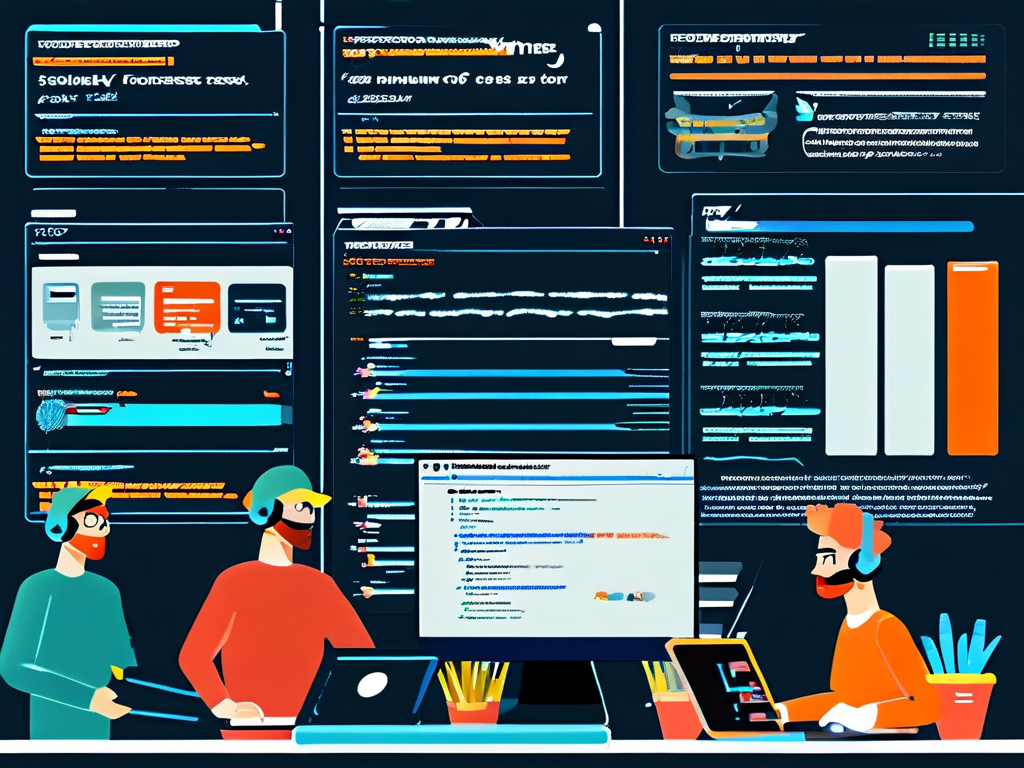In today's fast-paced digital landscape, businesses increasingly rely on automated deployment tools to streamline workflows and improve productivity. When combined with time tracking software, organizations can achieve unprecedented efficiency in project management and resource allocation. This article explores 12 leading automated deployment time tracking solutions, their key features, and how they revolutionize modern workforce management.

Why Combine Automated Deployment with Time Tracking?
Automated deployment refers to the process of automatically releasing code, configurations, or applications through predefined pipelines. When integrated with time tracking capabilities, these systems provide:
- Real-time visibility into development cycles
- Accurate measurement of task completion times
- Automatic correlation between code changes and work hours
- Enhanced compliance with labor regulations
Top 12 Automated Deployment Time Tracking Tools
-
Jenkins + Hubstaff Integration
- Open-source CI/CD platform paired with workforce analytics
- Features: Build triggers, screen monitoring, payroll automation
- Best for: DevOps teams requiring custom workflows
-
GitLab CI/CD with Built-in Time Tracking
- All-in-one solution from code repository to deployment
- Time logging per merge request
- Burnup charts showing effort vs. deployment progress
-
CircleCI + Toggl Track
- Cloud-based deployment with cross-platform time tracking
- Automatic time allocation based on pipeline stages
- Slack/Teams notifications for exceeded time budgets
-
Bamboo by Atlassian + Tempo Timesheets
- Enterprise-grade deployment with Jira integration
- Project cost forecasting based on deployment frequency
- Audit trails for compliance reporting
-
Travis CI + Harvest
- GitHub-focused deployment with client billing features
- Automatic time entry creation from build logs
- Budget vs. actual time comparisons
-
Azure DevOps + Clockify
- Microsoft ecosystem integration
- AI-powered time entry suggestions
- Resource capacity planning tools
-
AWS CodeDeploy + Time Doctor
- Cloud infrastructure deployment tracking
- Employee productivity analytics
- Detailed distraction frequency reports
-
Spinnaker + RescueTime
- Multi-cloud deployment orchestration
- Background activity monitoring
- Focus session tracking
-
TeamCity by JetBrains + Everhour
- On-premise deployment control
- Browser extension for time tracking
- Client portal with limited access
-
GitHub Actions + Timely
- Native GitHub environment integration
- Automatic memory-based time tracking
- AI-assisted time entry drafting
-
Octopus Deploy + Replicon
- .NET-focused deployment automation
- Geolocation tracking for remote teams
- Predictive time allocation models
-
Harness.io + ClickTime
- Machine learning-driven deployment
- Expense tracking integration
- Customizable utilization reports
Key Features Comparison
When evaluating automated deployment time tracking software, consider these critical aspects:
| Feature | Essential For | Top 3 Tools Offering It |
|---|---|---|
| Real-time dashboards | Executive reporting | GitLab, Azure DevOps, Harness |
| API access | Custom integrations | Jenkins, CircleCI, Travis CI |
| Offline tracking | Field teams | Bamboo, AWS CodeDeploy, Tempo |
| Multi-currency support | Global teams | Harvest, ClickTime, Replicon |
Implementation Challenges
While automated deployment time tracking systems offer significant benefits, organizations must address:
-
Data Privacy Concerns
- Employee monitoring legal requirements vary by region
- Solutions: Role-based access control, anonymization features
-
Integration Complexity
- Legacy system compatibility issues
- Recommendation: Middleware platforms like Zapier
-
User Adoption Resistance
- Common objections from development teams
- Mitigation: Gamification elements, transparent policy communication
-
Cost Optimization
- Balancing feature needs with subscription costs
- Strategy: Start with limited seats, expand gradually
Future Trends
Emerging technologies shaping the next generation of tools:
- AI-Powered Time Predictions
- Using historical data to forecast task durations
- Blockchain Verification
- Immutable records for audit purposes
- VR-Enhanced Monitoring
- Virtual workspace activity tracking
- Ethical AI Monitoring
- Emotion-aware systems detecting burnout signs
Selection Criteria
When choosing a solution, assess:
- Deployment frequency (daily vs. weekly releases)
- Team size and geographic distribution
- Compliance requirements (GDPR, HIPAA, etc.)
- Existing tech stack compatibility
- Budget constraints (open-source vs. proprietary)
Leading providers now offer free trials ranging from 14-30 days. For optimal results:
- Run parallel tests with 2-3 shortlisted tools
- Involve cross-functional teams in evaluation
- Measure both technical metrics (deployment success rate) and human factors (user satisfaction)
Automated deployment time tracking software bridges the gap between technical operations and workforce management. By implementing these solutions, organizations can expect:
- 20-35% reduction in deployment-related overtime
- 15-25% improvement in project estimation accuracy
- 30-50% faster audit preparation times
As hybrid work models become permanent, integrating deployment automation with intelligent time tracking will remain crucial for maintaining competitive advantage. The tools discussed above represent the current market leaders, but continuous evaluation remains essential as new entrants innovate in this rapidly evolving space.









